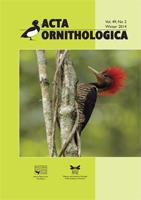Ecological impacts of habitat change on woodpeckers remain largely unstudied in regions other than Europe and North America. The sub-Himalayan sal Shorea robusta forests of northwest India have 17 woodpecker species, and a history of management-induced habitat modification. We studied how habitat parameters affect woodpeckers at a community level (viz. total abundance and species richness) as well as at individual species level. We assessed woodpecker abundance, species richness and described habitat features at 8 sites representing a gradient of structure and composition in a sal-dominated landscape. We surveyed each site in 2-km-long transects 20 times over breeding and non-breeding seasons and evaluated habitat characteristics in 10 circular and belt plots. We analysed woodpecker abundance, species richness, and abundance of individual species as functions of habitat variables and season. Woodpecker encounter rates and mean species richness, respectively, ranged from 1.5 to 10.0 birds/km and 1.7 to 6.9 species per survey at individual sites. Distance-based estimates of densities for the most frequently-observed species were also obtained. Basal area (large trees) and density of snags positively influenced total woodpecker abundance and species richness, with snags being more important during breeding season. Basal area was important for Greater Flameback Chrysocolaptes lucidus, Grey-faced Woodpecker Picus canus, Fulvous-breasted Woodpecker Dendrocopos macei and Lesser Yellownape Picus chlorolophus. Snags, tree density, tree diameter and termitarium density appeared to affect Greycapped Pygmy Woodpecker Dendrocopos canicapillus, Black-rumped Flameback Dinopium benghalense, Himalayan Flameback Dinopium shorii and Streak-throated Woodpecker Picus xanthopygaeus. Hence, for the conservation of native woodpecker communities in sal forests, it is necessary to retain large trees and standing dead wood.
How to translate text using browser tools
1 December 2014
Habitat Determinants of Woodpecker Abundance and Species Richness in Sub-Himalayan Dipterocarp Forests of North-West India
Raman Kumar,
Ghazala Shahabuddin,
Ajith Kumar
ACCESS THE FULL ARTICLE

Acta Ornithologica
Vol. 49 • No. 2
December 2014
Vol. 49 • No. 2
December 2014
bird communities
forest management
Picidae
Seasonality
selective logging
Shorea robusta
sub-Himalayas




